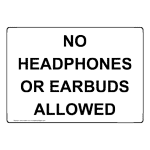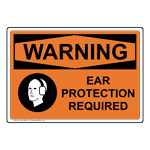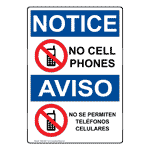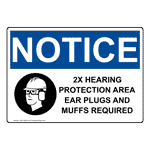
Open Ears: Reducing the Threat of Earbuds in the Workplace

We’ve become a very “plugged-in” society. With the advancement of technology, things like music and podcasts are always at our fingertips and they can help whittle away the long hours of downtime or even at work. While tuning in can be great in a lot of ways, it can also be dangerous.
In 2017, a man in Michigan was walking on the train tracks while listening to music through headphones. While he was walking and enjoying his tunes, a train that was moving in the same direction arrived. The train engineer tried to slow down and blew his whistle, but because the man’s music was piped through earbuds or headphones, he never heard the train that was swiftly bearing down on him from behind. When the police arrived, the man’s portable player was still playing music next to his body.
Now earbuds are wireless and even easier to use. As more and more people choose to tune in while they’re working, the same problem that played out in Michigan becomes a very real issue. Workers who are listening to their earbuds can’t hear what’s going on around them. In certain situations that can put them in harm’s way. That’s why more and more employers are choosing to implement an “open ears” policy at work.
What is “Open Ears?”
As the name implies, an “open ears” policy requires employees to keep their ears open while they work, whether it’s in all situations at work or just in specific high-risk areas. Headphones and earbuds offer great musical sound by canceling out most or all of the ambient noise around you. That can be very dangerous in some work situations.
While OSHA doesn’t have any specific rules or guidelines on the use of headphones at work, it did state a position in the fall of 2019 stating, “Listening to music may produce a safety hazard by masking environmental sounds that need to be heard, especially on active construction sites where attention to moving equipment, heavy machinery, vehicle traffic and safety warning signals may be compromised.”
Zeroing in on construction sites makes sense due to the nature of the work and all of the moving equipment, but it’s not the only situation where earbuds can pose a problem. For any business, it pays to look for situations where listening to earbuds or headphones may be acceptable and others where an “open ears” policy should be in place.
Tips for Establishing an “Open Ears” Policy
No two businesses are exactly the same, so it is important for any business owner or manager to assess their own unique situation. While you may decide to simply ban earbud and headphone use at work entirely, that’s not always the best option. Some people find that listening to music can help to minimize outside distractions such as other employee conversations, which helps them stay productive.
Hearing Safety Signs:
 |  |  |  |
When establishing your earbud / headphone policy, keep these tips in mind:
- Headphones are Not Hearing Protection – Jobs that require hearing protection such as noise-canceling headphones should not allow workers to substitute music headphones or use earbuds inside of the hearing protection. It doesn’t work that way.
- Construction sites are dangerous – OSHA chose to focus on the obvious industry and for good reason. Construction sites come with a high risk of injury due to the nature of the work. Moving machines, working at heights, plus an already loud environment make it an especially bad match for tuning into music. All construction sites should be posted as “open ears” areas.
- Manufacturing – While it may seem like someone who’s working in manufacturing could use the entertainment as they do repetitive work throughout the day, the reality is they are working with machines. Machines can quickly become dangerous when they malfunction and if the person operating the machine cannot hear it, they may not realize the malfunction is occurring until it’s too late. This is another scenario where “open ears” seems like a no-brainer.
- Office Space – Not every workplace accident happens around large equipment. While workers in an office who do most of their work on a computer while sitting at a desk may be a fine place to allow headphones, you may want to limit their use to desk-only. Why? Imagine an office worker gets up to grab a cup of coffee, he doesn’t hear the person waiting and talking right behind him at the coffee pot, turns around too fast and crashes into them spilling scalding-hot coffee all over them. That’s just one scenario. Anytime a worker is moving around the office, there is potential for injury to themselves or others. Earbuds and headphones cause distraction and increase those odds.
- Retail/Customer Service Industries – Not only could a worker in a retail sales floor situation cause an accident while listening to music, but that accident could also include a non-employee, which leaves your company open to a lawsuit. On a more basic level, all employees on the sales floor, regardless of their job, should be accessible to customers so listening to earbuds sends the wrong signal.
- Don’t Do a Test Period – Some freedoms, once given, are very hard to take away. Don’t try to have a trial run of headphones and earbud use if there is a chance it will need to go away. Workers who enjoyed the distraction may soon become disgruntled.
- Post Signs in “Open Ears” areas – Any area that you declare an “open ears” area at work should be clearly marked with signage and maybe even marked out with floor tape if needed.
The key to establishing a solid “ears open” policy at work is to assess your work environment carefully to find areas that are high-risk areas for injury when a worker is distracted or cannot hear ambient noise. Once you’ve done that, the next step is communicating effectively to your staff about your new policies and marking those areas with signs.
Your employees’ safety is your responsibility. Establishing “open ears” rules that keep them focused on the job can help you avoid costly accidents and create a healthier work environment.

